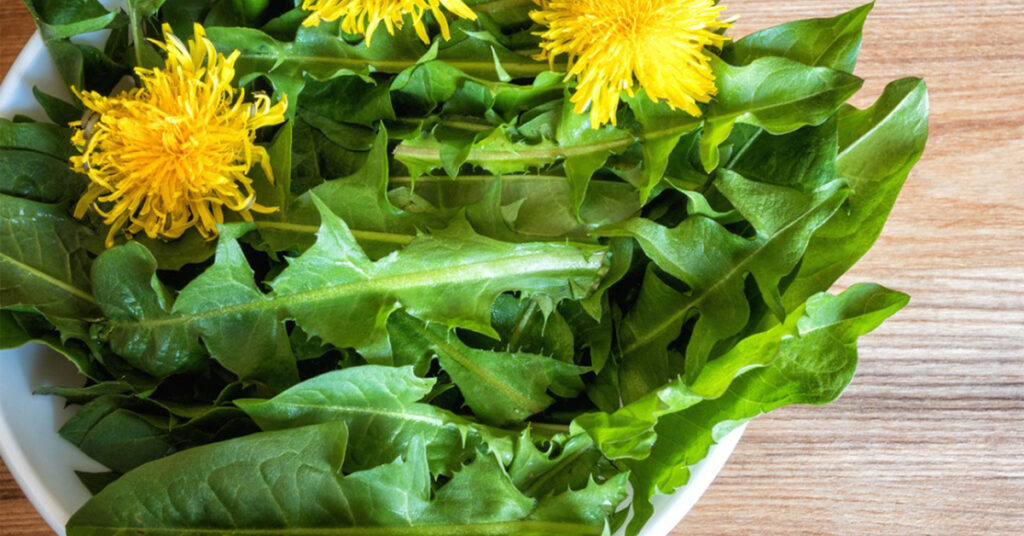Dandelion or popularly known as milk thistle ( Taraxacum officinale), belongs to the family of flowering plants and grows in many parts of the world.
Dandelion can be of particular benefit for your health if you include it as an integral part of your menu.
For centuries, people used dandelion in traditional medicine as tea, salad, or syrup. An interesting fact is that the whole plant can be eaten, and all its parts (root, stem, leaves, and flowers) have their own significance for health.
Dandelion is a perennial herb that blooms from March to October. The leaves are best used before flowering, the root in spring, and the stem during flowering.

Table of Contents
Here are 7 health benefits of dandelion and what science has to say about it.
A rich nutritional and antioxidant value that is important for combating chronic inflammation in the body.
From the root to the flower, dandelion is highly nutritious, ie full of vitamins, minerals, and fiber. Its green leaves can be eaten raw or cooked and are an excellent source of vitamin C, A, and vitamin K . They also contain smaller amounts of vitamin E, B9, and other B vitamins.
The mineral composition is also impressive: iron, calcium, magnesium, and potassium.
The root is rich in inulin, a soluble fiber that is an excellent food for the beneficial intestinal microflora.
Dandelion is a powerful source of antioxidants. The main ones are beta-carotene and polyphenols (mostly in the yellow flower, but also in the roots and leaves).
May contribute to the regulation of blood glucose
Hicoric and chlorogenic acid are bioactive components of dandelion, found in all parts of the plant.
These are the two components that can help lower blood glucose.
Animal studies show that they can improve the secretion of insulin by the pancreas, which significantly improves the absorption of glucose into muscle tissue. So, these processes lead to improved insulin sensitivity and reduced blood sugar levels.
In addition, these acids have been shown to slow down the digestion of starchy foods, which also leads to lower blood glucose levels.
However, more studies are needed that will have people as respondents.
Dandelion can contribute to a better lipid profile and lower blood pressure
Several studies in rabbits have suggested that some of the dandelion’s bioactive components may help lower blood cholesterol and triglyceride levels.
Although there is little scientific support, dandelion is thought to have a diuretic effect, leading to a reduction in blood pressure. However, this effect can also be attributed to the high percentage of potassium it contains.
It May have a protective effect on the liver
One of the most important uses of dandelion in traditional medicine is for liver health. Recent animal studies provide evidence that our ancestors may have been right.
Namely, it is considered that the positive impact on the liver that the dandelion showed in the examinations is due to its rich antioxidant composition.
In addition, it was found to have a stimulating effect on reducing fat in the fatty liver and a protective effect against oxidative stress in the liver tissue.
However, much research is needed on the subject.
Fat-rich foods, rich in fiber – foods for weight loss and better digestion
Given that dandelion has very few calories, but is particularly rich in antioxidants, nutrients, and, most importantly – fiber, it is expected to contribute to the weight loss process. Of course, it also has a low glycemic index.
More and more studies indicate the importance of fiber for weight loss, lowering blood sugar, but also for good digestion. They contribute to weight loss and control sugar by disrupting the work of digestive enzymes and binding to water, which can promote a feeling of satiety. Thus, the absorption of glucose into the bloodstream is reduced.
Fiber (soluble fiber – the inulin rich in milk thistle) is also food for the natural, beneficial microflora present. Recently, more and more studies are linking the balance or health of the intestinal microflora with general health.
In addition, some studies suggest that dandelion has the ability to improve carbohydrate metabolism and reduce fat storage, through components that act on the hormones in charge of storage. However, these are animal studies and the results need to be properly confirmed in humans.
Anticancer and immune-stimulatory effect
Perhaps the most intriguing claims about the beneficial effect of milk thistle are exactly these, ie that it can contribute to the fight against malignant diseases.
Laboratory studies (of human cell culture) show interesting results. Malignant cells treated with dandelion leaf extract showed growth retardation, and treatment of tumor cells of the liver, colon, and pancreas with root extract proved to be particularly effective in preventing their growth.
Laboratory studies on the antimicrobial properties of dandelion say that its extract can significantly reduce the viral reproducibility of the dandelion. A similar effect was shown in pathogenic bacteria.
More research is needed on both topics, but the existing ones are quite promising.
NOT RECOMMENDED FOR HORMONE-SENSITIVE CANCERS.
Dandelion is also good for skin and bone health
Animal and laboratory tests give certain results according to which dandelion extract can protect the skin from UV radiation, aging, irritation, inflammatory processes, but also help fight acne.
In terms of bone health, things are clearer – the high concentration of vitamin K, but also calcium in dandelion, strongly contributes to bone health.
Inulin, the fiber present in dandelion, can also contribute to bone health through improved digestion and the condition of beneficial intestinal microflora.
Dandelion is most often used as a salad or tea.
You can make salad from early, young, and spring leaves collected from clean meadows, outside t, before the plant blooms.
Tea recipe
The tea is prepared from the root after it is dried and crushed.
Preparation:
Put half a liter of water on a teaspoon of chopped root and bring to a boil. Boil for 10 minutes and then drink several times, in smaller quantities.
